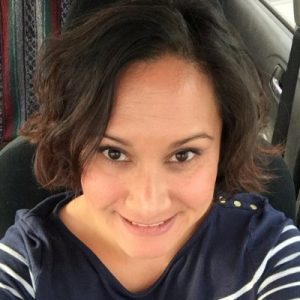
by Jenny DeRocher
Rachel Seale has worked at Iowa State University Special Collections and University Archives as an Outreach Archivist for almost two years. She moved from Fairbanks, Alaska, where she worked for six years as an archivist at the University of Alaska Fairbanks. At the Iowa State University Special Collections and University Archives, Rachel is happy doing what she does best: outreach and education. Above all else, she enjoys working with patrons and students and teaching them about the archives and special collections. Iowa State University is in Ames, Iowa and holds a rich agricultural history. The university has notable engineering and agricultural programs. The Special Collections and University Archives holdings reflect this history, as do the exhibits Rachel plans. She works to connect the current university students and surrounding community to this history.
Rachel balances many tasks as an Outreach Archivist. She does program planning, teaches classes, coordinates exhibitions, plans meetings to collaborate with different departments in the library and at the university, does a few reference desk shifts every week, and manages the social media outreach. Rachel is on the Events Committee and is Secretary for Librarian’s Assembly for the University Library. She also serves as social chair for the Asian American Pacific Islander Faculty Staff Association at the university and is a new member of the Society of American Archivists (SAA) Committee on Public Awareness.
This variety of tasks works for her, but she acknowledges that she may not be the typical archivist. The exhibition program planning and instruction is the biggest part of her job and she works to make her classes interactive and fun for students. The exhibit coordination and occasional curation takes a lot of time and the department schedules exhibitions almost two years in advance. This part of the outreach is most important to her—she sees making connections with other people as an opportunity for the archives and her institution.
The public programs Rachel has coordinated have been well attended. The exhibition curators design an over-arching theme to an exhibit and then the programming is coordinated before, during, and after the exhibition is open to the public. Programming includes but is not limited to opening receptions and lectures that occur through the duration of an exhibition, surrounding its theme. A key goal is to collaborate with other institutions in the area, like the Ames Public Library or the Ames Historical Society. For example, the Ames Public Library hosted a lecture given by Professor Heidi Hohmann about the development of the Iowa State Parks System this past summer to correspond with an exhibit Rachel’s department put together. With limited parking, the campus can be inaccessible for the general public for events. However, by hosting events at the public library, her outreach events become more accessible and allow for creating valuable relationships in the community outside of the student body.
Rachel explained to me that her position didn’t exist at her institution before she was hired. She acknowledged the freedom she has with these circumstances. When she needs guidance she goes to her Department Head, Petrina Jackson, who has a background in outreach and instruction. She also asks her colleagues at her institution or at surrounding institutions for advice if she thinks their expertise is more appropriate. The openness at Iowa State is one of the reasons she was attracted to this position—making relationships and collaborating with people is very important both on a personal and a professional level for Rachel. This is good advice for those of us entering the field: finding institutions that are open to building your position around your expertise and passion will make both you and your institution more successful.
However, Rachel does also recognize how challenging it can be for institutions to prioritize outreach. It takes a lot of time and attention away from the other necessary work at the institution. From her experience, Rachel thinks her position and the field of outreach and advocacy is growing. In ten years, she sees her position splitting into two separate positions because her institution’s framework is growing, in part because of her successful outreach and advocacy. At the Iowa State University Special Collections and University Archives, there is more programming happening, larger exhibits and opportunities available, more collections to work with (while everyone participates in outreach, her position freed up other archivists to focus more on growing the collection and also created awareness to donors), and more researchers. As the field of outreach and advocacy grows, and the Society of American Archivists (SAA) puts more research out on the field, Rachel believes more institutions will create positions like hers to promote their own growth.
As an Outreach Archivist, Rachel believes her job is to teach people about what the archives are and why they are important. She doesn’t just do community outreach and advocacy—she does it within her own institution. She enjoys dismantling tropes about the archives; for instance, she encourages people to touch and engage with the materials and to find a connection with the rich history held at the Iowa State University Special Collections and Archives. With successful programming and instruction, with these connections patrons and students feel to archival resources and the university’s history, it becomes easier to advocate for her repository and her position. This connection she has with patrons and students is what matters to her—more so than any connection she has with collections in her repository.
